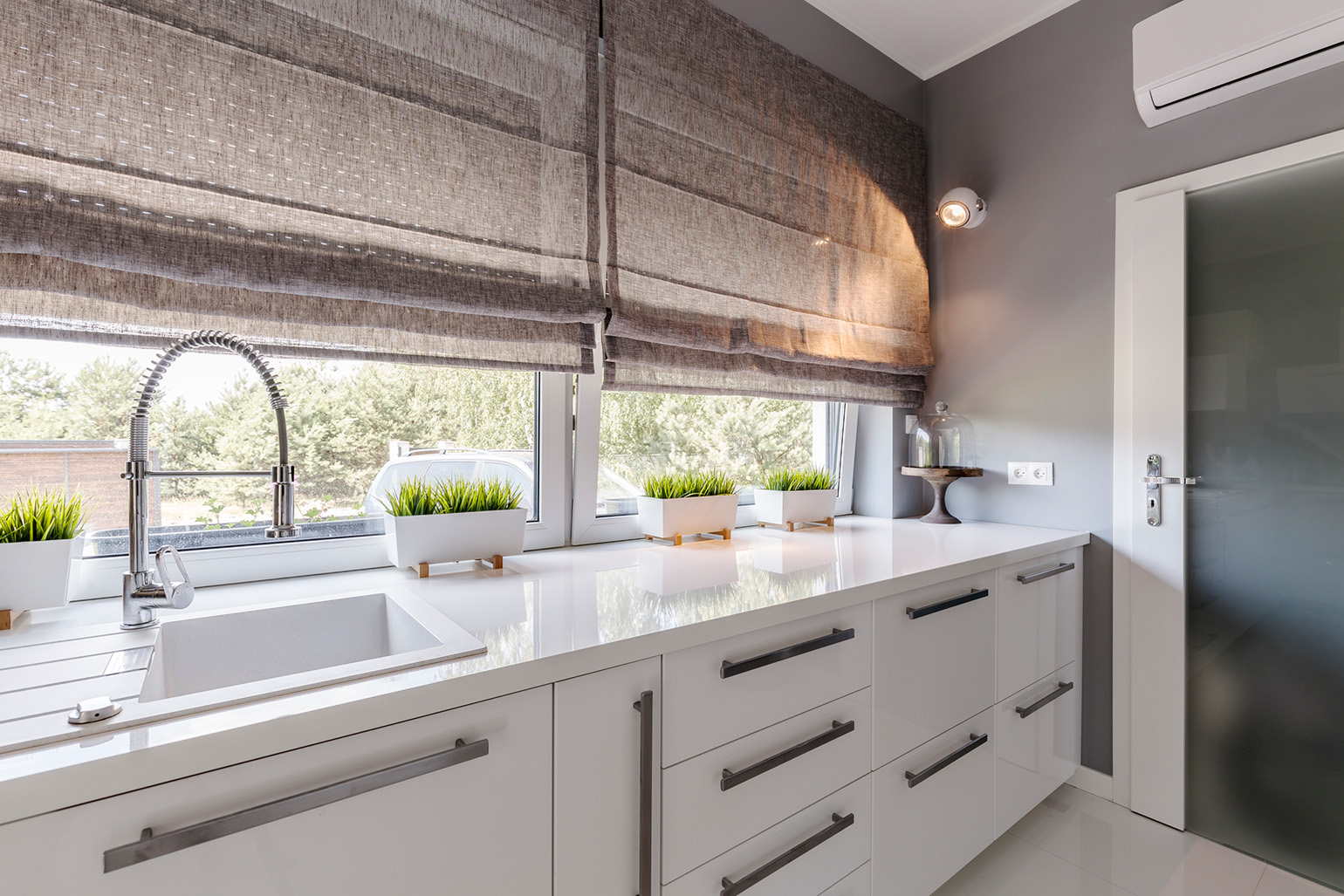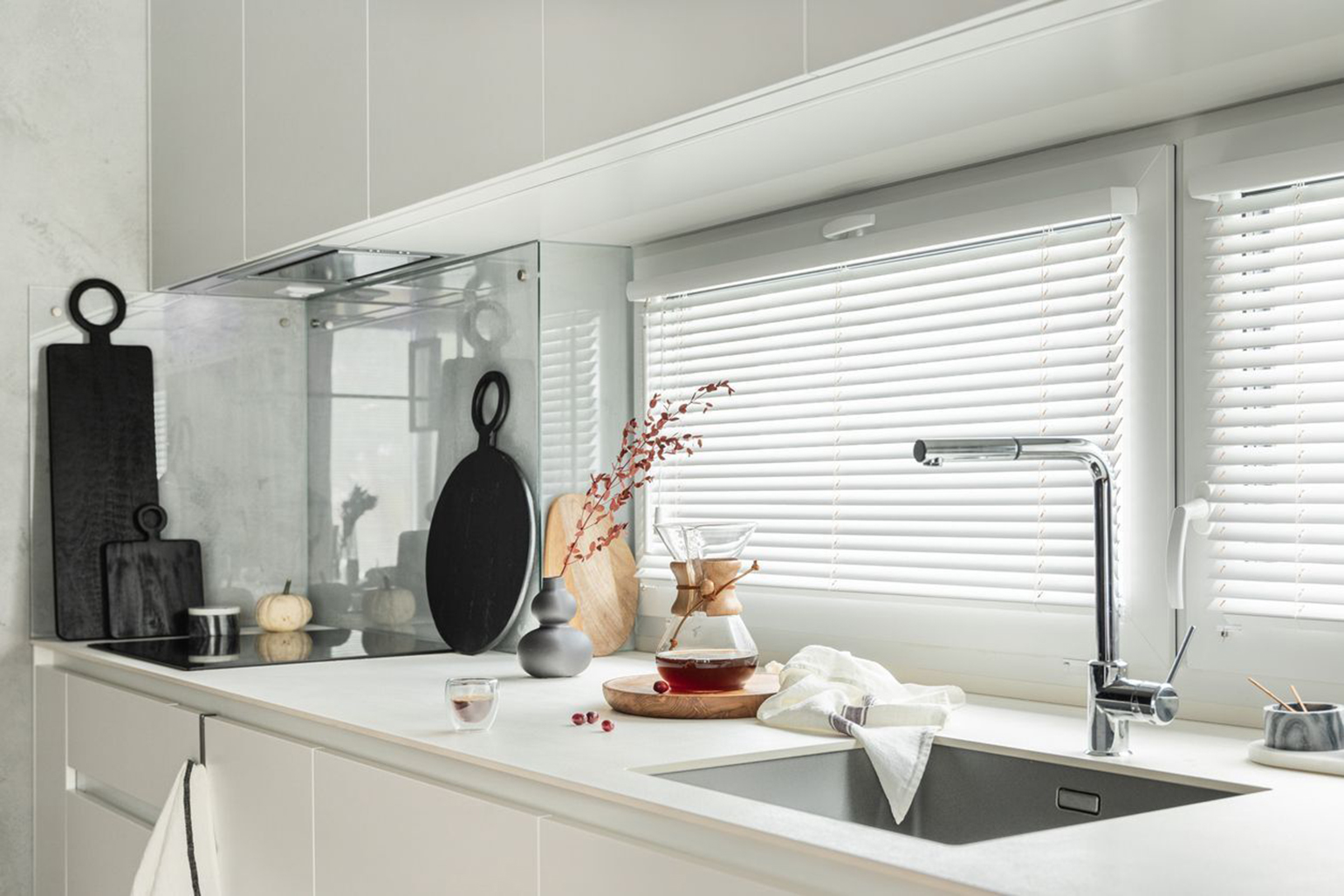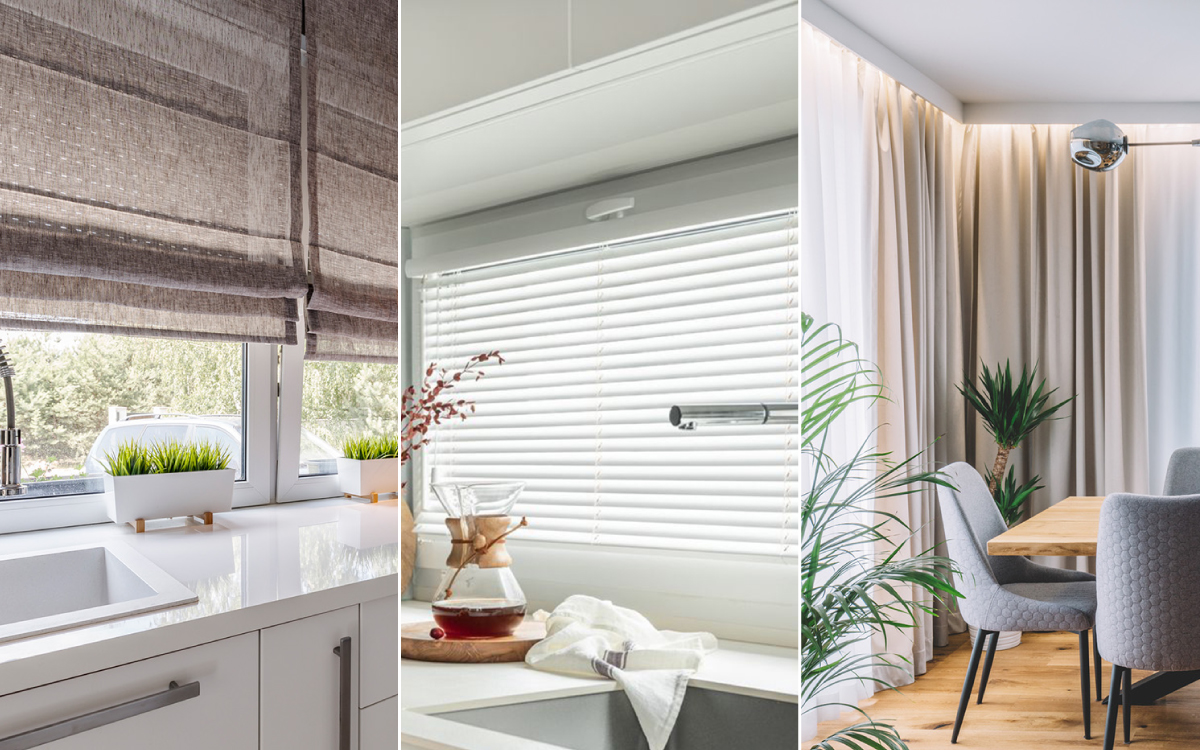Choosing between shades, blinds, and curtains can feel like a major design dilemma, especially when your decision affects your energy bills, privacy, and home value. Are you tired of blinds that let in too much light, or shades that don't quite match your decor? We cut through the confusion and break down the cost, efficiency, durability, and style of every major window treatment. Whether you're looking to save big on heating and cooling, achieve perfect blackout privacy, or finally get that high-end designer look, this complete comparison guide has the straightforward answers you need before you spend a dime.
Key takeaways
For maximum energy efficiency: Shades (cellular, blackout) are recommended, especially for bedrooms, sun-facing windows, and home offices.
For precise light & privacy control: Blinds (slatted, vertical) are ideal for living rooms, dining rooms, and kitchens.
For high-end design & texture: Curtains/drapery (custom fabric, grommet) are best for formal living spaces and master bedrooms.
What are the differences between shades, blinds, and curtains?
The core distinction between the three primary window treatments is in their material and operation: curtains are soft and highly aesthetic, blinds are hard and offer precise light angling, and shades are fabric panels focused on insulation and clean coverage. Understanding this functional difference is key for selecting the right fit.
Shades
 Soft fabric panels that cover the entire window. Common shade types include the clean lines of roller shades or the tailored look of roman shades. They operate by rolling up, stacking, or folding neatly.
Soft fabric panels that cover the entire window. Common shade types include the clean lines of roller shades or the tailored look of roman shades. They operate by rolling up, stacking, or folding neatly.
Key Features: Focus on energy efficiency and clean aesthetics.
Types of window shades:
Tie-up shades: traditional shades with narrow straps that loop or tie at the top, offering privacy, color, and texture without cords.
Cellular shades: honeycomb-shaped cells that stack to form a shade, known for energy efficiency and blocking light, UV rays, and noise.
Single cell shades: made with one layer of larger stacked cells, best suited for covering bigger windows.
Double cell shades: made with two layers of interconnected cells, providing superior insulation, light blockage, and privacy, especially for smaller windows or high-humidity areas.
Pleated shades: made from a single layer of fabric that folds into pleats, similar to cellular shades but more budget-friendly and customizable for energy efficiency.
Solar shades: are shades that reduce light, heat, and glare, blocking up to 99% of harmful UV rays, ideal for offices and home theaters.
Roller shades: fabric panels rolled onto a horizontal pole, popular, easy to clean, and available in light filtering, darkening, or blackout options.
Panel track shades: large fabric panels that slide back and forth on a track, great for covering sliding glass doors and large windows, and can serve as room dividers.
Roman shades: fabric that gathers horizontally when raised, mimicking the look of drapery with the functionality of a blind.
Sheer shades: translucent fabric layers with horizontal fabric slats suspended between them, providing a delicate look that gently filters light.
Read more: How Much Does It Cost To Install Window Shades?
Blinds
 Hard window coverings composed of rigid slats (horizontal or vertical) made of materials like wood, aluminum, or vinyl. Common types include vertical blinds and mini blinds. Slats can be pleated or flat.
Hard window coverings composed of rigid slats (horizontal or vertical) made of materials like wood, aluminum, or vinyl. Common types include vertical blinds and mini blinds. Slats can be pleated or flat.
Key Features: Focus on precise light control and durability.
Types of window blinds:
Venetian blinds: horizontal slats that allow light control.
Vertical blinds: have slats made from stiffened fabric, plastic, or wood hanging from a horizontal track. They are usually used over a sliding door or a long window.
Mini blinds: highly common and budget-friendly type of horizontal blind distinguished by their very narrow aluminum slats. They offer excellent light control in a compact, lightweight design.
Read more: How Much Does Window Blind Installation Cost?
Curtains
 Fabric panels hung from a rod outside the window frame. Drapes or drapery are formal, floor-length versions often made from heavier fabrics. They offer high design flexibility.
Fabric panels hung from a rod outside the window frame. Drapes or drapery are formal, floor-length versions often made from heavier fabrics. They offer high design flexibility.
Key Features: Focus on aesthetics, texture, and softness.
Types of curtains:
Pencil pleat: feature small, tight pleats along the header, giving them a full, traditional look. They are one of the most affordable options and work well on windows of all sizes.
Pinch pleat: formed by pinching the fabric at the top, creating full, distinctive, and elegant pleats. They are often custom-made and look best on long curtains fitted around large windows.
Eyelet (grommet): have metal rings built into the top fabric, allowing the curtain rod to slide through easily. They form large, modern, vertical folds and are popular for their ease of installation and contemporary aesthetic.
Wave header: use a special track to create a continuous, smooth 'wave' across the entire width of the curtain. This modern, minimalist style offers a sleek look that doesn't bunch up when opened.
Read more: How Much Does It Cost To Install Curtains?
Window treatments comparison table
The table below shows the most important aspects to consider when deciding on a new type of window covering for your home.
Factor | Shades | Blinds | Curtains |
Cost | $$ | $ | $$$ |
Light control | Must be fully raised or lowered. Excellent options for full light blockage. | Excellent and precise. Slats tilt to control light angle and privacy simultaneously. | Variable opacity (light filtering fabrics to opaque). Cannot be precisely adjusted for indirect light. |
Energy efficiency | Superior insulation. Cellular (honeycomb) shades are industry leaders for energy savings. | Poor to moderate. Forms a barrier, but the slats allow air gaps. Exception: cellular/faux wood blinds | Good insulation if thermal-backed or heavier fabrics are used. |
Aesthetics & design | Highly customizable with roman, roller and fabrics. Clean, modern look. | Minimalist, sleek, and less intrusive. Makes rooms appear larger. Limited pattern variety. | Highest design versatility. Can be customized with decorative cornice or grommet headers. |
Installation | Professional installation recommended, especially for a precise inside mount fit. | DIY or professional install. Can be inside mount or outside mount. | Easier to hang curtains as an outside mount over the frame. |
Durability (lifespan) | 5 to 10 years. Fabric is durable, but some cellular shades can be delicate. | Varies significantly. Vinyl/aluminum blinds can bend easily; wooden blinds are highly durable. | 3 to 7 years (depending on fabric quality). |
Window Treatment Buying Factors: Energy-efficiency, privacy, and safety
How to manage light, save on energy bills, and keep kids safe are often overlooked when choosing window coverings. Before you choose a product, use these factors to match the perfect covering to your needs.
Saving Energy and Money: Which window coverings can help lower my energy bills the most?
The biggest difference is how well each type of window treatment stops heat from escaping or entering your house.
Shades are the winner: Cellular shades (the ones that look like honeycombs) are specifically designed to trap air. This creates a powerful insulation layer against summer heat and winter cold, which can lead to measurable savings.
Curtains vs blinds: Heavy drapery acts as a good air barrier, offering better insulation than most standard blinds. Thermal-backed curtains can also provide good insulation. Standard aluminum blinds or vinyl slats are the least effective insulators because air can easily pass through the slat gaps.
Light Control and Privacy: How can I control light and glare better?
Finding the perfect balance of natural light and privacy changes depending on the time of day.
Blinds are the precision tool: If you need to let in soft light but keep neighbors from seeing in, blinds are the best. You can tilt the slats just enough to redirect glare without fully covering the window. This makes them ideal for living areas.
Shades for darkness: When you need to totally block light for sleeping or viewing, opaque blackout shades or room-darkening roller shades are unbeatable. They often fit tighter than blackout curtains, blocking light around the edges.
Curtains for softness: Sheer fabrics provide superior light filtering, softening the light quality in a room and giving it a pleasant glow.
Protecting Children and Pets: Are my window treatments dangerous?
Safety is the top concern for homes with little kids or pets. Dangling cords on blinds and shades are a major hazard.
Cordless is best: The simplest and safest choice is to install cordless blinds or cordless shades. You raise and lower them by gently pushing the bottom rail, completely removing the danger of tangling. This is the safest type of window treatment for any room where children play or sleep.
Curtains: Curtains are generally a safer option since they don't always have cords. If you do hang curtains with cords, choose systems where the cords are kept high up and out of reach.
Cord safety rules (If you must have cords): The Window Covering Safety Council strongly recommends that you:
Make single cords as short as possible.
Anchor all continuous-loop cords permanently to the wall.
Install "cord stops" to limit how much the cord can move.
Move all furniture (cribs, chairs, sofas) away from windows where cords are present.
Window Treatment Ideas: What's best for my kitchen, bathroom, or sliding door?
The right window treatment solution often depends on the specific window type or room:
Window type/location | Recommended treatment | Installation & maintenance notes |
Sliding glass doors | Vertical blinds are the traditional, functional choice, but floor-length drapery on a traverse rod offers more style. | Vertical blinds stack neatly, avoiding the need for a wide stack of horizontal slats. |
Bay windows | Roman shades or pleated shades are excellent window treatment ideas for bay windows as they provide a clean inside mount and highlight the architectural shape. | An outside mount cornice can be used to unify the look across the multiple windows. |
Kitchen/basements | Café curtains (covering only the bottom half) or waterproof mini blinds are ideal for windows in basements or kitchens where moisture/grime is a factor. | Aluminum blinds are easiest to wipe clean in high-humidity areas. |
Bathrooms | Faux wood blinds, vinyl shades, or waterproof mini blinds are essential. These materials resist warping, fading, and mildew while ensuring total privacy. | Faux wood and vinyl are completely moisture-resistant. Look for materials that can be easily wiped down to prevent mold/mildew. |
Next Steps: Finding your perfect match
The final choice comes down to your priorities. Use this simple matrix one last time to decide what's right for you:
Priority | Recommended Treatment | Best Room Use |
Energy efficiency | Shades (cellular, blackout) | Bedrooms, sun-facing windows, home offices |
Light & privacy control | Blinds (slatted, vertical) | Living rooms, dining rooms, kitchens |
High-end design & texture | Curtains/drapery (custom Fabric, grommet) | Formal living spaces, master bedrooms |
Ready to move from ideas to installation? The next step is getting a professional involved! Working with local experts ensures perfect measurements, the right materials, and a beautiful installation that matches your personal preference and budget.
FAQs
The "best" one depends on your main goal.
For energy savings and a clean look: Shades (especially cellular).
For precise light control and durability: Blinds (especially wood or faux wood).
For style and a soft, luxurious feel: Curtains and Drapes.
Current trends show high popularity for motorized shades and roller shades due to smart home convenience and clean, minimalist style. However, classic Roman shades and floor-to-ceiling drapery are also top choices for adding texture and elegance.
Timeless options that work in almost any home are:
Plantation shutters: For clean lines and excellent light control.
Roman shades: For a soft, tailored look that is neither too modern nor too traditional.
Wooden blinds: They add natural texture and warmth that works with virtually all home decor styles.
Laura Madrigal is the Home Design Specialist at Fixr.com, dedicated to identifying and analyzing significant changes within residential design. She is the author of leading trends reports on interior design, kitchen, and bathroom, and her insights have been featured in publications like Realtor and the New York Post.
